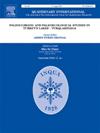智利北部阿塔卡马沙漠海岸(20°S)鸟类和哺乳动物利用的多样性:全新世中期案例研究
IF 1.8
3区 地球科学
Q3 GEOGRAPHY, PHYSICAL
引用次数: 0
摘要
沿着阿塔卡马沙漠(智利北部)海岸的考古记录的特殊保存条件允许对专门的狩猎-采集-捕鱼社会对动物的不同利用进行详细的分析。本文对PQB2_CON_002_SA遗址进行了动物考古研究,其年代为中全新世(6772±35 ~ 5962±32 14C年BP)。其目标是描述哺乳动物和鸟类的捕获和加工做法,确定其用于技术目的和作为食物来源的用途,并确定这些分类群在该区域各地点的作用的变化或连续性。结果表明,鸬鹚和鹈鹕主要被捕获并用于食物和技术。在骆驼是一种非常边缘的资源的环境中,它们被用来获取诸如骨头、兽皮和内脏等原材料,除了它们的营养用途外,它们还被用作容器。本文章由计算机程序翻译,如有差异,请以英文原文为准。
Diversity of birds and mammals uses on the Atacama desert coast, northern Chile (20°S): a case study of the Middle Holocene
The exceptional preservation conditions of the archaeological record along the coast of the Atacama Desert (Northern Chile) allow detailed analyses of the differential utilization of fauna by specialized hunter-gatherer-fisher societies. This paper presents the zooarchaeological study of the site PQB2_CON_002_SA, dated to the Middle Holocene (6772 ± 35 to 5962 ± 32 14C years BP). The objectives are to characterize the capture and processing practices of mammals and birds, determine their uses for technological purposes and as food sources, and establish changes or continuities in the roles of these taxa at sites in the region. The results indicate that cormorants and pelicans were predominantly captured and used for food and technology. The otariids were used for raw materials procurement such as bones, hides, and internal organs, which were employed as containers, in addition to their nutritional use, in an environment where camelids were a very marginal resource.
求助全文
通过发布文献求助,成功后即可免费获取论文全文。
去求助
来源期刊

Quaternary International
地学-地球科学综合
CiteScore
5.60
自引率
4.50%
发文量
336
审稿时长
3 months
期刊介绍:
Quaternary International is the official journal of the International Union for Quaternary Research. The objectives are to publish a high quality scientific journal under the auspices of the premier Quaternary association that reflects the interdisciplinary nature of INQUA and records recent advances in Quaternary science that appeal to a wide audience.
This series will encompass all the full spectrum of the physical and natural sciences that are commonly employed in solving Quaternary problems. The policy is to publish peer refereed collected research papers from symposia, workshops and meetings sponsored by INQUA. In addition, other organizations may request publication of their collected works pertaining to the Quaternary.
 求助内容:
求助内容: 应助结果提醒方式:
应助结果提醒方式:


